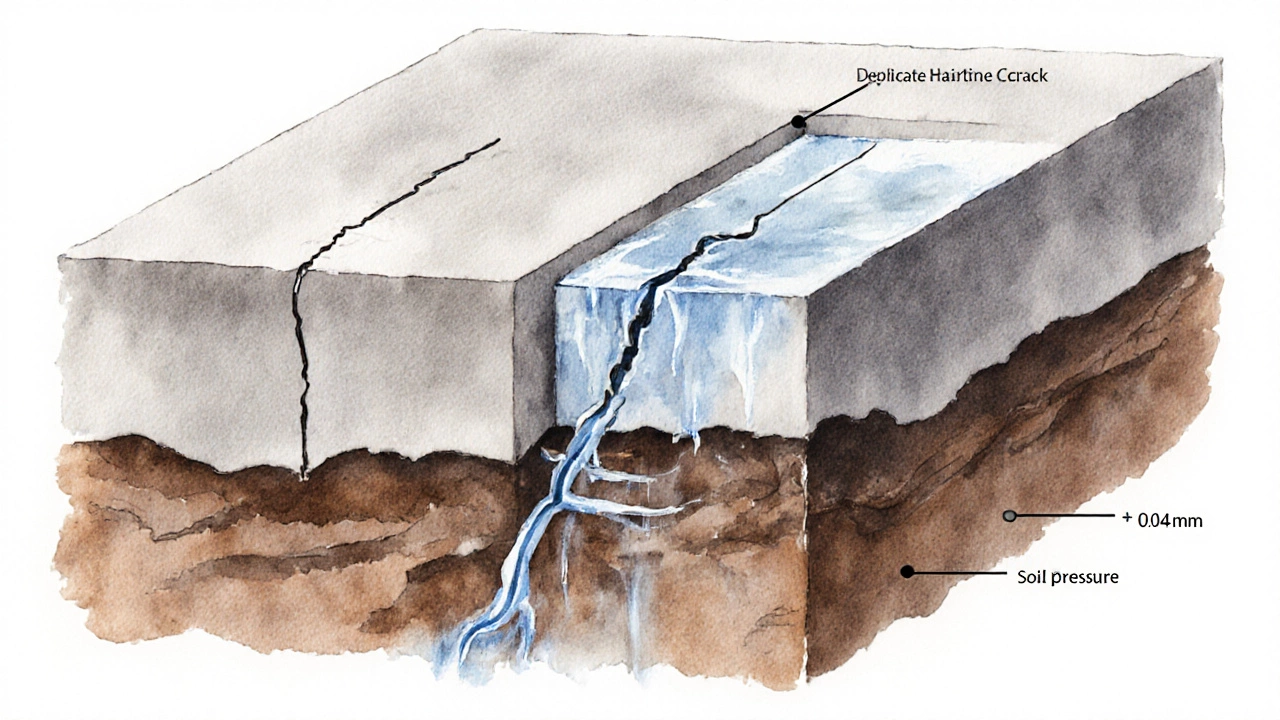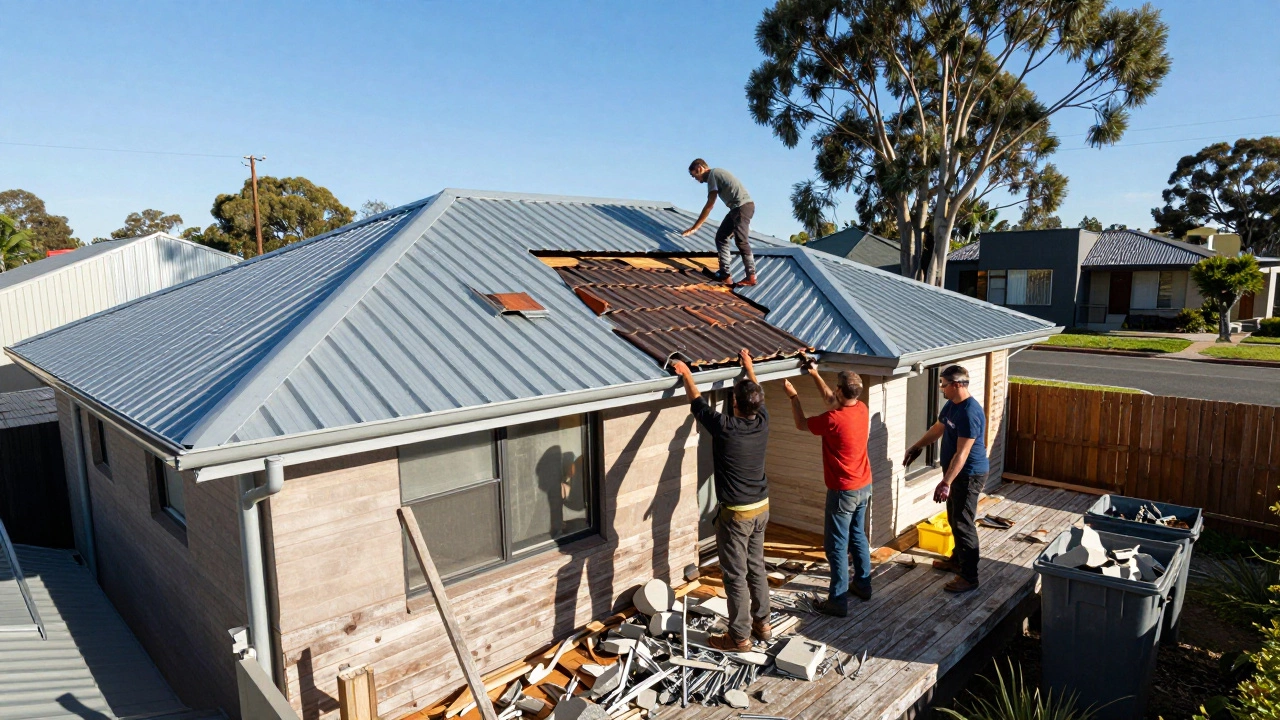Foundation Crack Width Assessment Tool
Assess Your Foundation Crack
When it comes to a foundation crack a split or fissure that appears in the concrete base of a building, the big question is how big is too big. Homeowners often spot a line in the slab and wonder if it’s a harmless hairline or a warning sign. This guide breaks down the numbers, explains what each size means, and tells you when to sit back and when to call for help.
Most concrete a composite material made of cement, water, aggregates, and often reinforcing steel foundations are designed to bear loads for decades.
Why crack size matters
A crack is more than a visual flaw. Its width can indicate the level of stress the structure is experiencing. A hair‑thin opening might just be shrinkage after the concrete cured, while a gap wider than a quarter inch could signal ongoing movement that weakens the load path.
Movement of the surrounding soil the earth beneath a building that can expand, contract, or shift often drives those stresses.
How professionals measure a foundation crack
Experts don’t eyeball a crack. They use a crack width gauge a thin metal or plastic ruler with graduated marks down to 0.1mm or a digital microscope. The measurement is taken at several points along the crack because width can change from one end to the other.
- Start at the edge of the crack and note the narrowest point.
- Move a few inches in and record the next measurement.
- Take the widest reading you find - that’s the “maximum crack width” used in most guidelines.
Temperature and moisture can make a crack appear larger, so inspectors often repeat the test after the structure has settled for a day.
Common crack size categories and what they mean
| Width | Typical cause | What it usually means |
|---|---|---|
| Hairline <0.1mm (≈0.004in) | Concrete shrinkage, minor drying | Generally harmless, no action needed |
| Small 0.1‑0.3mm (0.004‑0.012in) | Minor soil movement, temperature changes | Monitor, seal if water gets in |
| Moderate 0.3‑0.5mm (0.012‑0.020in) | Settling, moisture expansion, minor load shift | Professional evaluation recommended |
| Large >0.5mm (>0.020in) | Significant settlement, hydrostatic pressure the force exerted by groundwater against the underside of a foundation slab, structural overload | Likely requires structural repair |
The numbers above are based on guidelines from the American Concrete Institute (ACI) a standards organization that publishes technical recommendations for concrete construction and common industry practice.

When a crack is acceptable
In most residential foundations, a crack up to 0.3mm (about a tenth of an inch) is considered acceptable if:
- The surrounding concrete is still solid and not crumbling.
- No water is seeping through the crack.
- The crack width has stayed constant for at least three months of observation.
- The house shows no other signs of shifting, such as doors sticking or uneven floors.
If those conditions are met, the foundation crack width is within a range that typically does not compromise structural integrity.
When to call a structural engineer
Even a small crack can hide a bigger problem if other red flags appear. Call a licensed structural engineer a professional who evaluates load paths and designs solutions for building stability when you notice any of the following:
- The crack widens by more than 0.2mm (0.008in) in a month.
- Multiple cracks form in a line or stair‑step pattern.
- Doors and windows start to jam, or interior walls develop gaps.
- There is visible water pooling near the foundation after rain.
- Visible movement of the foundation, such as a sloping floor.
Engineers will often perform a soil assessment testing for moisture content, compaction, and type and may install monitoring plates to track movement over time.

Typical repair options for different crack sizes
Repair methods scale with the severity of the crack.
Hairline and small cracks (≤0.3mm)
- Clean the opening with a wire brush.
- Apply a concrete sealant or epoxy injection designed for minor fissures.
- Cover with a waterproofing membrane if the area is prone to moisture.
Moderate cracks (0.3‑0.5mm)
- Consult a professional for epoxy injection that bonds the crack.
- Consider adding carbon fiber reinforcement thin strips that attach to the wall and carry tensile loads on the interior side of the wall.
- Install interior drainage or a French drain if water pressure is a factor.
Large cracks (>0.5mm)
- Structural underpinning-extending the foundation deeper into stable soil.
- Helical piers or push piers to lift and stabilize the slab.
- Full‑depth wall anchors or steel plates to redistribute loads.
- Professional epoxy or polyurethane injection combined with external bracing.
The choice of repair also depends on the underlying cause. For example, a crack caused by hydrostatic pressure will need drainage solutions before any structural fix.
Prevention tips to keep cracks minimal
- Maintain consistent moisture around the house. Too much water during a rainstorm or too little during a drought can cause soil movement.
- Landscape away from the foundation-avoid retaining walls directly against the slab.
- Ensure gutters and downspouts direct water at least 5feet away from the footing.
- Inspect the foundation annually for new cracks or widening of old ones.
- Use quality concrete mix with proper reinforcement, especially in new builds.
Small preventive steps can save you from costly repairs down the road.
Frequently Asked Questions
What is the smallest crack that should be a concern?
A crack that widens beyond 0.3mm (about 0.012in) and continues to grow should be evaluated by a professional.
Can I measure a crack with a regular ruler?
You can get a rough idea, but a calibrated crack width gauge or a digital microscope gives the accuracy needed for proper assessment.
Do all foundation cracks need epoxy injection?
No. Hairline cracks that stay stable typically only need sealing. Epoxy injection is reserved for cracks that could affect load transfer.
How long should I monitor a new crack before deciding on repair?
Observe the crack for at least three months. If it widens or other symptoms appear, plan for a professional evaluation.
Is hydrostatic pressure a common cause of large cracks?
Yes. When groundwater pushes against the underside of a slab, it can lift and split the concrete, often creating cracks wider than 0.5mm.
By keeping an eye on crack width and acting early, you can protect your home’s foundation without breaking the bank.






